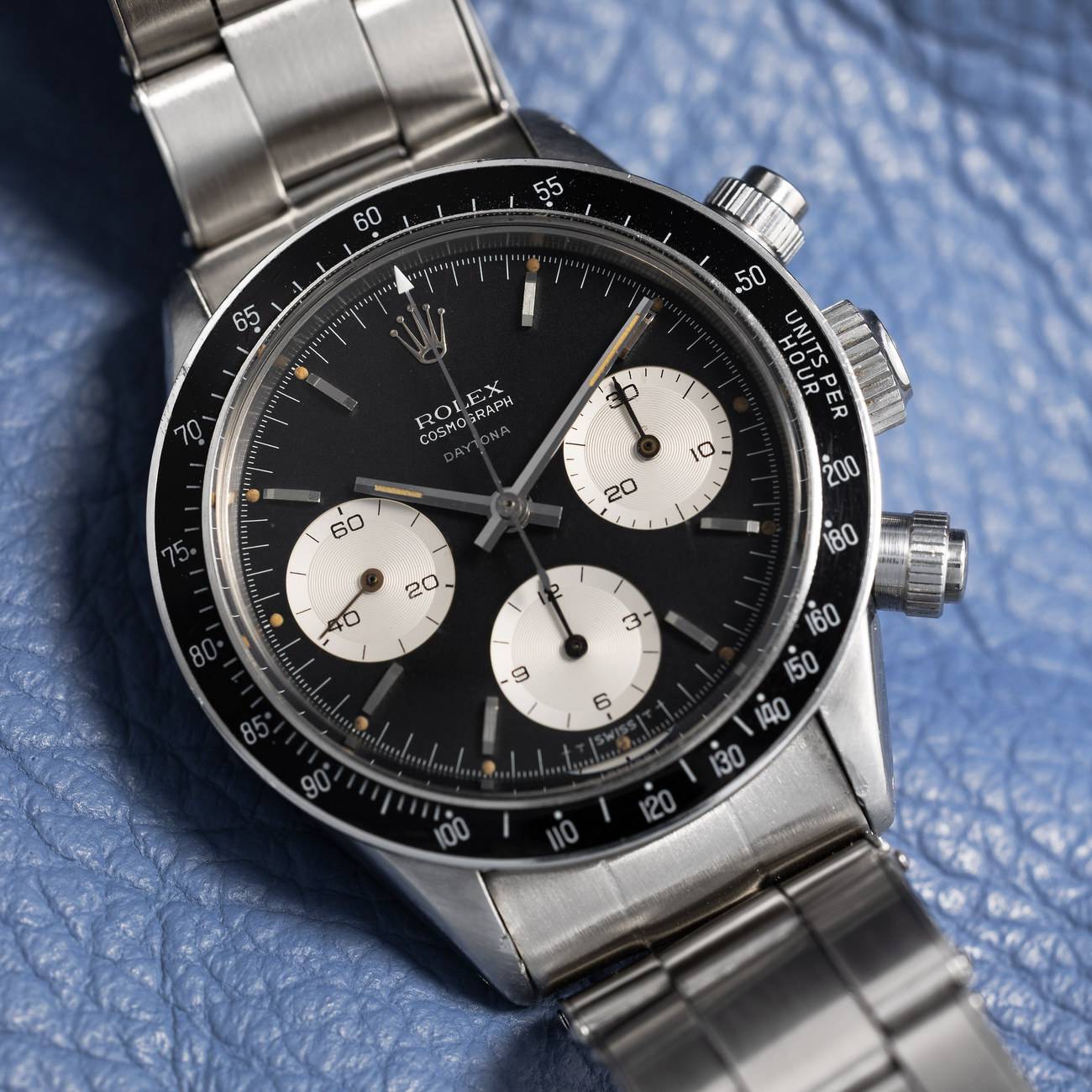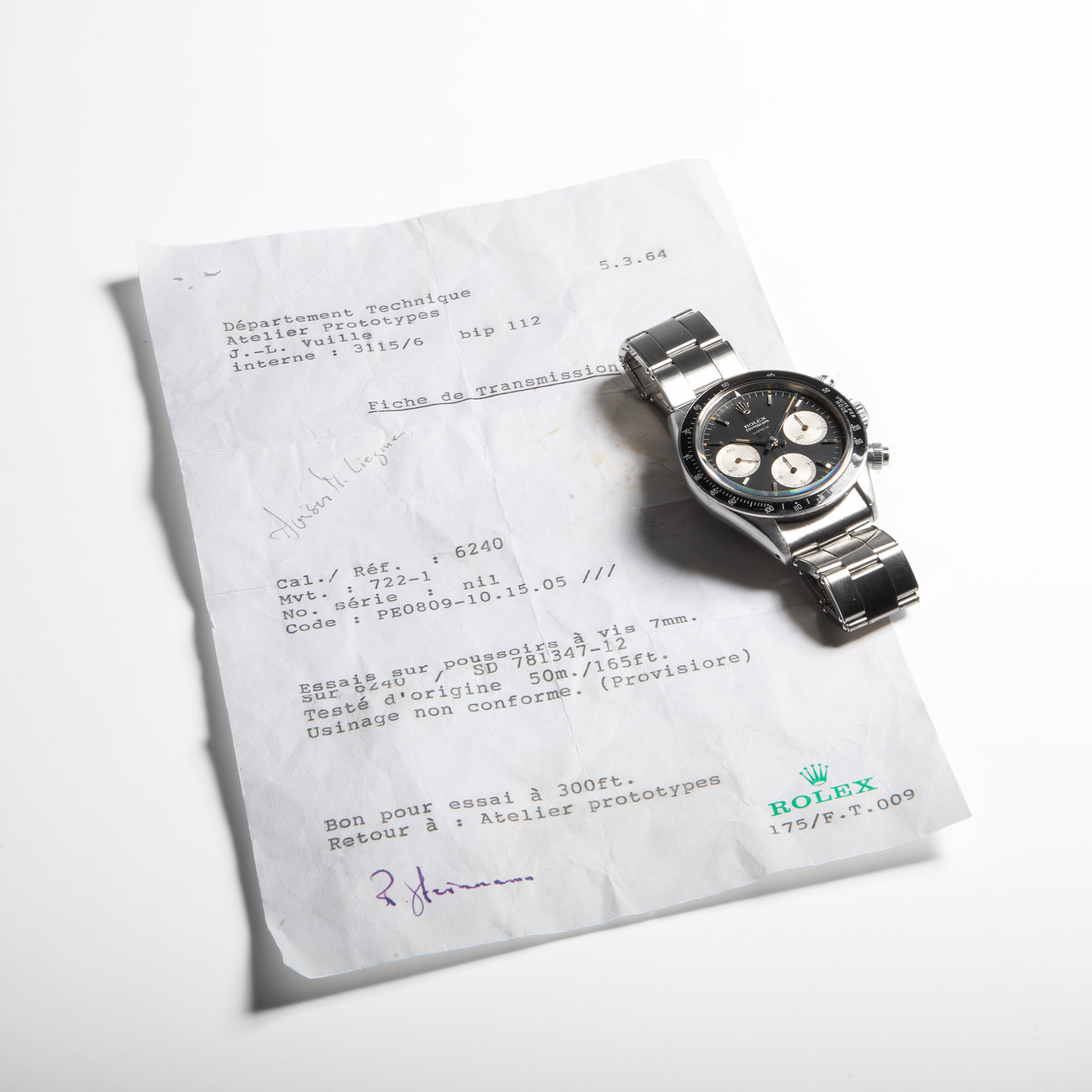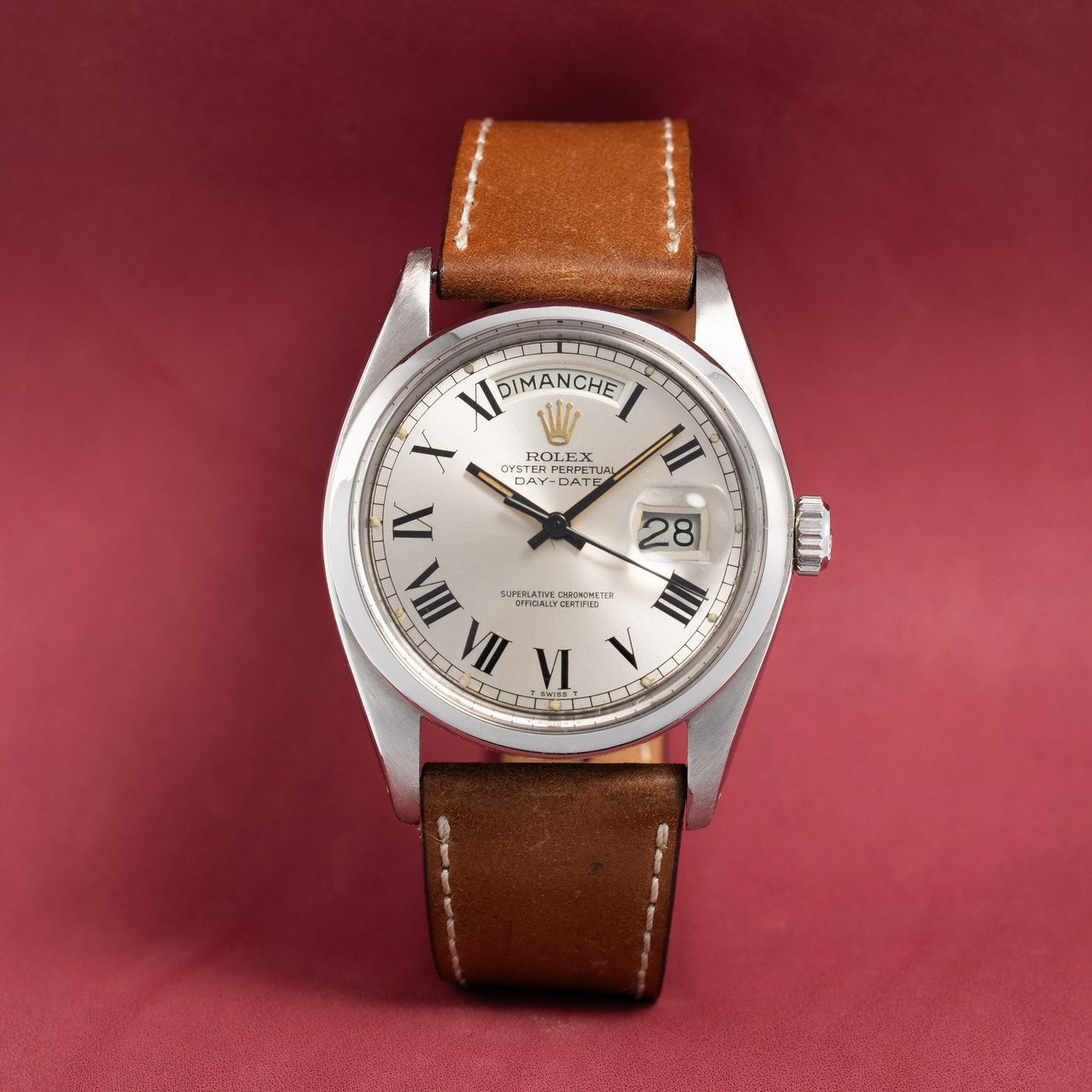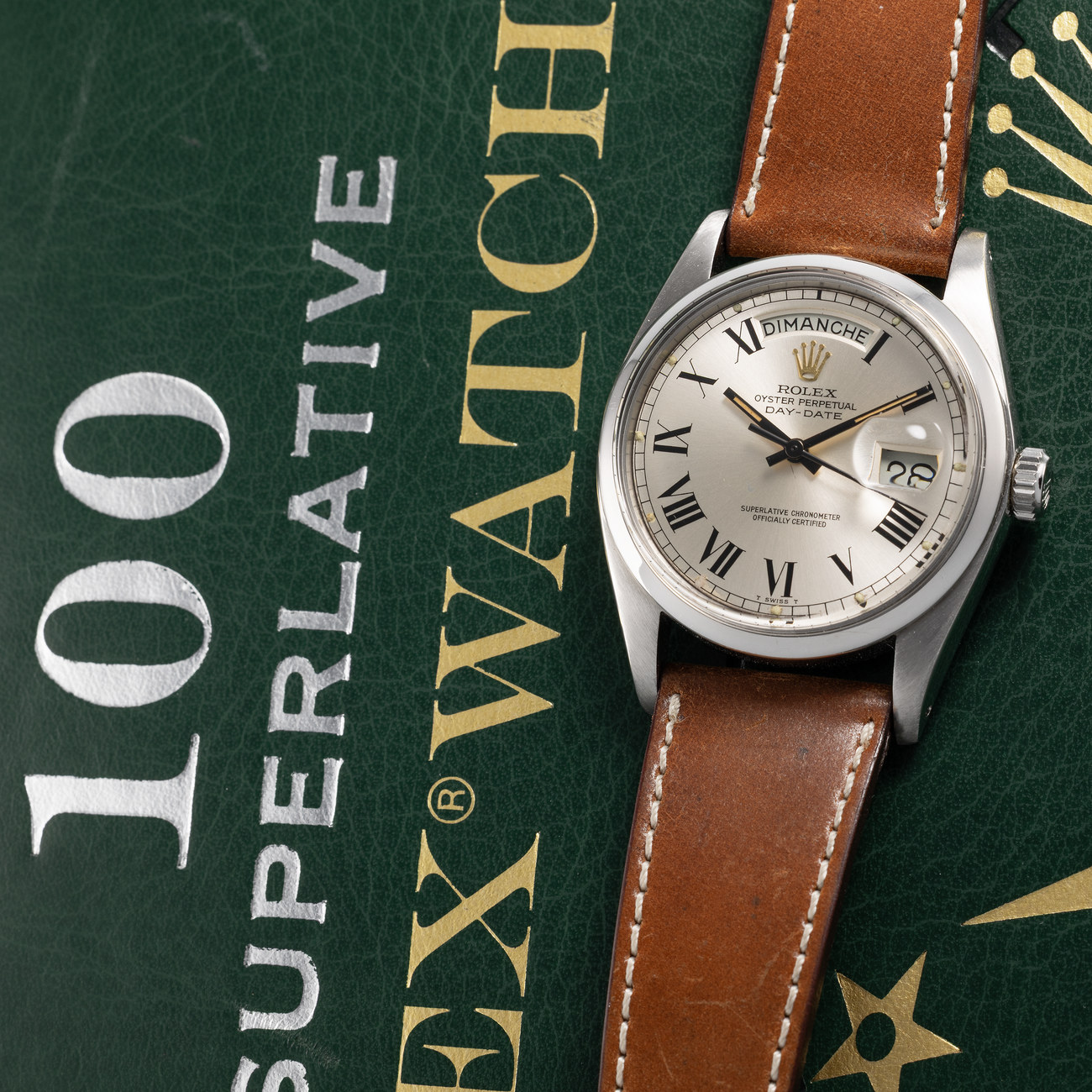To be offered at the Exclusive Timepieces Auction in Monaco, October 18–19, 2025
Rolex has always been a brand synonymous with innovation, durability, and the relentless pursuit of excellence. From redefining utility and tool watches to creating timeless icons, its legacy is built not only on success but on the rigorous trials and prototypes that paved the way.
This October, the Monaco Legend Group will present two extraordinary Rolex watches that testify to this hidden side of the brand’s history. Both are true factory prototypes, crafted not for public release but for the most demanding internal tests conducted by Rolex’s Département Technique, Atelier Prototypes. They represent moments of experimentation that reshaped two of Rolex’s most important lines: the Daytona and the Day-Date.

The Daytona Prototype: The Birth of the Screw-Down Pusher
Perhaps the most electrifying piece of the sale is a Rolex Daytona prototype that predates even the reference 6240. Believed to be the very first screw-pusher Daytona ever built, this watch was created to test the waterproofness of chronograph pushers at different depths underwater.
Accompanying the watch is a 1964 official Fiche de Transmission from Rolex’s prototype department, documenting its role in the waterproof trials. The case bears no serial or reference numbers, a hallmark of a true prototype, with the case back engraved only with an internal workshop code.

The matte black dial features an early, delicate “Daytona” script and a rare “double Swiss” signature, confirming its place at the dawn of the Cosmograph’s evolution. Inside beats a calibre 722-1—four years before it would enter regular production.
To understand the significance of this watch, one must recall the reference 6240, the first Daytona to adopt screw-down pushers and thus transform into the “Oyster” Cosmograph. This prototype, however, rewinds the story even further, offering a direct glimpse into the engineering experiments that made that breakthrough possible. It is not just a grail—it is a missing link in the Daytona lineage.

The Day-Date Prototype: A Steel Giant in Disguise
If the Daytona prototype rewrites the history of sports chronographs, the second watch—this Day-Date prototype—challenges everything we thought we knew about Rolex’s most prestigious line.
Crafted in stainless steel, this Day-Date was created to test the introduction of the quick-set date function, a feature that would revolutionize the model and is still found on modern sapphire-crystal Day-Dates. It houses calibre 3035, the movement that became the foundation for all automatic Rolex watches from 1977 onwards.

The idea of a steel Day-Date is itself almost unthinkable; the model was always intended as Rolex’s symbol of luxury, exclusively in precious metals. This test piece breaks that rule, existing solely for internal evaluation. It stands as one of only two known example of its kind—a technical experiment never meant to leave Rolex’s workshops.
Two Prototypes, One Legacy
Together, these watches form an unparalleled pairing. The Daytona prototype speaks to Rolex’s pioneering efforts in tool watch engineering, while the Day-Date prototype reveals the hidden experimentation behind one of the brand’s most refined and prestigious lines.
Both are more than watches—they are evidence that Rolex’s story is still being written. For collectors, they offer not just rare references but the ultimate treasures: genuine prototypes that shaped the history of two of Rolex’s most celebrated icons.
This October in Monaco, history will be on the auction block.



